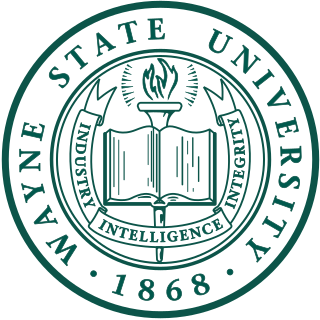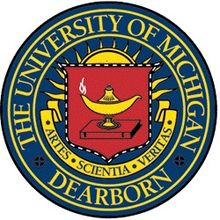
The Big Ten Conference is the oldest Division I collegiate athletic conference in the United States. Founded as the Intercollegiate Conference of Faculty Representatives in 1896, it predates the founding of its regulating organization, the NCAA. It is based in the Chicago area in Rosemont, Illinois. For many decades the conference consisted of 10 prominent universities, which accounts for its name. As of 2014, it consists of 14 member institutions and 2 affiliate institutions, with 4 new member institutions scheduled to join in 2024. The conference competes in the NCAA Division I and its football teams compete in the Football Bowl Subdivision (FBS), formerly known as Division I-A, the highest level of NCAA competition in that sport.

Rutgers University, officially Rutgers, The State University of New Jersey, is a public land-grant research university consisting of four campuses in New Jersey. Chartered in 1766, Rutgers was originally called Queen's College, and was affiliated with the Dutch Reformed Church. It is the eighth-oldest college in the United States, the second-oldest in New Jersey after Princeton University, and one of nine U.S. colonial colleges that were chartered before the American Revolution.

Wayne State University is a public research university in Detroit, Michigan. It is Michigan's third-largest university. Founded in 1868, Wayne State consists of 13 schools and colleges offering approximately 350 programs to nearly 24,000 graduate and undergraduate students. Wayne State University, along with the University of Michigan and Michigan State University, compose the University Research Corridor of Michigan. Wayne State is classified among "R1: Doctoral Universities – Very high research activity".

The University of Michigan–Flint (UM-Flint) is a public university in Flint, Michigan. Founded in 1956 as the Flint Senior College, it was initially established as a remote branch of the University of Michigan, offering upper-division undergraduate courses. The institution developed into a fully-fledged university and received accreditation in 1970. Subsequently, the name was changed to the University of Michigan–Flint while still adhering to the policies of the University of Michigan Board of Regents.

Indiana University–Purdue University Indianapolis, commonly referred to as IUPUI, is a public research university in Indianapolis, Indiana, United States. It is a collaboration between Indiana University and Purdue University that offers undergraduate, graduate, and professional degrees from both universities. Administered primarily through Indiana University as a core campus and secondarily through Purdue University as a regional campus, it is Indiana's primary urban research and academic health sciences institution. IUPUI is located in downtown Indianapolis along the White River and Fall Creek.

Towson University is a public university in Towson, Maryland. Founded in 1866 as Maryland's first training school for teachers, Towson University is a part of the University System of Maryland. Since its founding, the university has evolved into eight subsidiary colleges with over 20,000 students. Its 329-acre campus is situated in Baltimore County, Maryland eight miles north of downtown Baltimore. Towson is one of the largest public universities in Maryland and still produces the most teachers of any university in the state.

The Summit League, or The Summit, is an NCAA Division I intercollegiate athletic conference with its membership mostly located in the Midwestern United States, from Minnesota in the east, to the Dakotas, Nebraska and Colorado to the West, and Missouri and Oklahoma to the South. Founded as the Association of Mid-Continent Universities in 1982, it rebranded as the Mid-Continent Conference in 1989, then again as the Summit League on June 1, 2007. The league headquarters are in Sioux Falls, South Dakota.

The University of Michigan–Dearborn is a public university in Dearborn, Michigan. Founded in 1959 with a gift from the Ford Motor Company, it was initially known as the Dearborn Center, operating as a remote branch of the University of Michigan. The branch gradually developed into a fully-fledged university over the years. Upon receiving its own accreditation in 1970, the university changed its name to the University of Michigan–Dearborn, while still adhering to the policies of the University of Michigan Board of Regents.

Indiana University—Purdue University Columbus (IUPUC) is a public university in Columbus, Indiana, United States. IUPUC offers degree programs from both Indiana University and Purdue University.
An urban university is a U.S. term for an institution of higher learning that is socially involved and serves as a resource for educating the citizens and improving the health of the city or region in which it is located. That is, the urban university must be “of” the city as well as “in” the city. A metropolitan university includes a similar mission; however, its research has national and international implications and its student body includes a significant number of international students. Many institutions have further defined what urban and metropolitan universities encompass.
A chancellor is a leader of a college or university, usually either the executive or ceremonial head of the university or of a university campus within a university system.

The Purdue University system is a public university system in the U.S. state of Indiana. A land-grant university with nearly 75,000 students across five institutions comprising six physical campuses, a statewide technology program, extension centers in each of Indiana's 92 counties, and continuing education programs. Additionally, there are another ~44,000 students enrolled in an online university. Each university in the system maintains its own faculty and admissions policies which are overseen by the Purdue University Board of Trustees. Purdue's main campus in West Lafayette is the best-known, noted for its highly regarded programs in engineering and adjacent subjects.

Robert Laurent Caret is an American academic and university administrator. He is the former chancellor of the University System of Maryland and former president of San José State University, Towson University and the University of Massachusetts System.

Nancy Ellen Cantor is an American academic administrator, the chancellor of Rutgers University-Newark, in Newark, New Jersey, and incoming President of Hunter College. A social psychologist, Cantor is recognized for her scholarly contributions to the understanding of how individuals perceive and think about their social worlds, pursue personal goals, and how they regulate their behavior to adapt to life's most challenging social environments. Previously, Cantor was the first woman chancellor at Syracuse University. Prior to that she was the first woman chancellor at the University of Illinois at Urbana-Champaign. Earlier, she had been provost at the University of Michigan.

Campus Compact is a coalition of colleges and universities committed to fulfilling the public purposes of higher education.

The Association of American Universities (AAU) is an organization of American research universities devoted to maintaining a strong system of academic research and education. Founded in 1900, it consists of 71 public and private universities in the United States as well as two universities in Canada. AAU membership is by invitation only and requires an affirmative vote of three-quarters of current members.
The Great Cities' Universities (GCU) coalition, incorporated in 1998, is the successor organization to the Urban 13, an informal research-sharing association of urban universities in major metropolitan areas of the United States.

The University of Missouri is a public land-grant research university in Columbia, Missouri. It is Missouri's largest university and the flagship of the four-campus University of Missouri System. MU was founded in 1839 as the first public university west of the Mississippi River. It has been a member of the Association of American Universities since 1908 and is classified among "R1: Doctoral Universities – Very high research activity".













